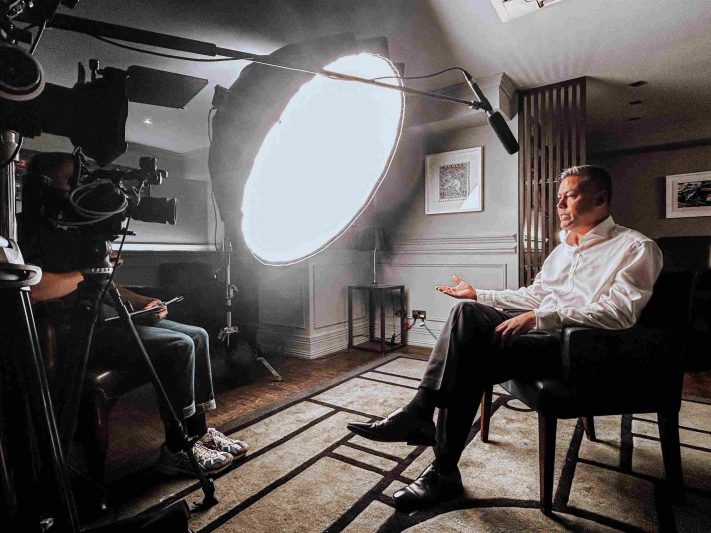In today’s digital age, video production has become an integral part of our lives. From captivating adverts and engaging social media content to informative documentaries and entertaining films, videos have the power to captivate and inspire audiences like no other medium. However, behind every impressive video lies a well-structured production process that ensures its success. Let’s explore the five essential stages of video production that transform an initial concept into a polished and captivating final product.

Stage 1: Pre-production – Laying the Foundation
The pre-production stage is the crucial first step in video production. It involves careful planning and organisation, setting the groundwork for a successful project. During this stage, the key tasks include:
- Concept Development: This phase involves brainstorming ideas, defining the video’s purpose, target audience, and message. It is essential to establish a clear vision and align all stakeholders on the project’s objectives.
- Scriptwriting: Writing a compelling script is vital to convey the intended message effectively. The script outlines the dialogue, narration, and key visual elements, providing a roadmap for the production team.
- Storyboarding: Creating a storyboard involves illustrating the key scenes and shots of the video sequentially. This visual representation helps in visualizing the final product and guides the production team during shooting and editing.
- Location Scouting and Casting: Identifying suitable filming locations and casting the right actors or presenters contribute to the overall quality of the video. A thorough assessment of potential locations ensures the desired aesthetic and logistical requirements are met.
Stage 2: Production – Bringing Ideas to Life
The production stage is where all the planning and preparation materialise into actual footage. It involves capturing the video content according to the script and storyboard. Key elements of this stage include:
- Equipment Setup: Assembling the necessary camera, lighting, and sound equipment is essential for a smooth shoot. This includes positioning cameras, setting up lighting rigs, and ensuring proper audio capture.
- Filming: This is where the magic happens! Following the script and storyboard, the production team captures the desired shots, scenes, and interviews. Attention to detail and efficient time management during filming are vital to staying on schedule and budget.
- Directing and Managing Crew: The director or producer coordinates the production team, guiding actors, crew members, and ensuring the creative vision is achieved. Effective communication and collaboration among all team members are crucial during this stage.
Stage 3: Post-production – Crafting the Final Product
Post-production is the stage where all the recorded footage is transformed into a cohesive and visually appealing video. The key activities during this stage include:
- Video Editing: Combining and arranging the captured footage, including visual effects, transitions, and graphics, to create a cohesive narrative. Video editing software provides the necessary tools for trimming, color correction, audio synchronisation, and enhancing overall visual appeal.
- Sound Design: Enhancing the audio quality by adding background music, sound effects, voice-overs, and ensuring proper synchronisation with the visuals. Sound editing and mixing contribute significantly to the overall impact of the video.
- Motion Graphics and Animation: Incorporating motion graphics, animated elements, and visual effects can add depth and creativity to the video. These elements help communicate complex concepts, captivate the audience, and elevate the overall production value.
Stage 4: Distribution – Sharing Your Creation
After the video has been produced and finalized, the next stage is distribution. This involves sharing the video with the intended audience through various channels:
- Online Platforms: Uploading the video to video-sharing platforms like YouTube, Vimeo, or social media platforms such as Facebook, Instagram, and LinkedIn, ensures broad reach and engagement.
- Broadcast and Streaming: If the video is intended for television or streaming platforms, it needs to be prepared according to the specific broadcasting standards and delivered to the appropriate channels.
Stage 5: Evaluation – Assessing Success and Feedback
The final stage of video production involves evaluating the success of the project and gathering feedback. It is essential to assess the video’s impact, audience reception, and determine if the objectives set during pre-production were achieved. This feedback can be used to inform future video productions and refine the overall process.
Video production is a multi-stage process that requires careful planning, coordination, and creativity. From the initial concept to the final product, each stage plays a crucial role in bringing ideas to life and captivating audiences. By following the five stages of video production – pre-production, production, post-production, distribution, and evaluation – you can ensure a well-executed video that effectively communicates your message and resonates with your target audience. So, get ready to unleash your creativity and embark on an exciting video production journey!
If you’re looking for a video partner then look no further as here at Holler we have over 12 years experience in completing the 5 stages above to perfection. Get in contact with the team today to get your next video project started.
